Gastrict Pain - TCM Expert Advice on Symptoms | Treatment and More
In modern society, people lead fast-paced lives with irregular eating habits and face intense work pressures, contributing to an increased risk of stomach pain. The combination of external environmental factors and internal influences makes stomach problems, especially stomach pain, gradually become a widespread urban disease. Unhealthy lifestyles can lead to physical weakness and digestive system issues, including stomach pain.
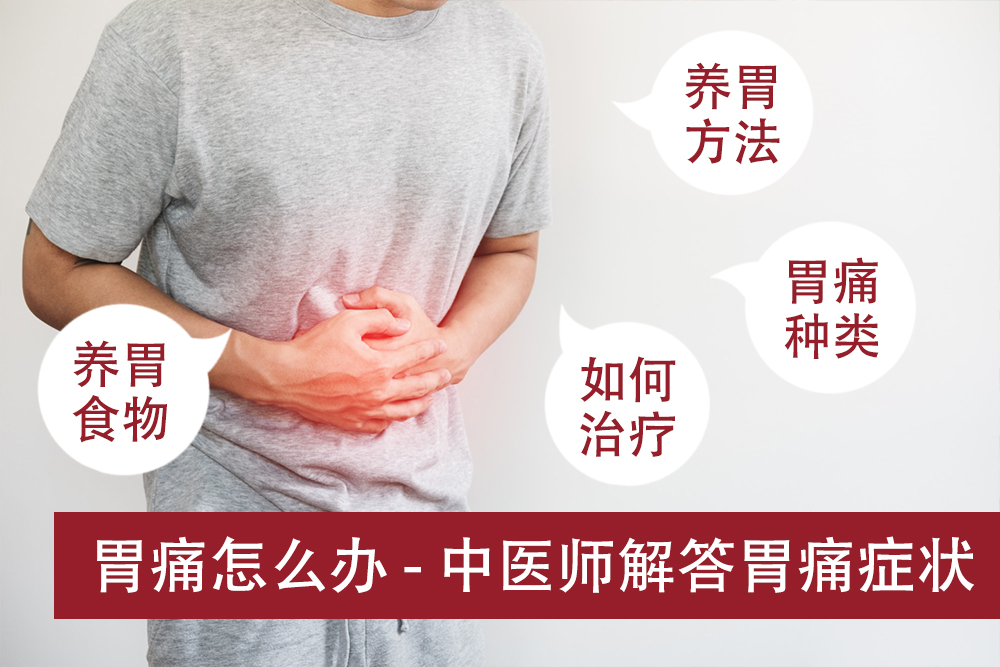
Gastrict Pain - TCM Expert Advice on Symptoms | Treatment and More
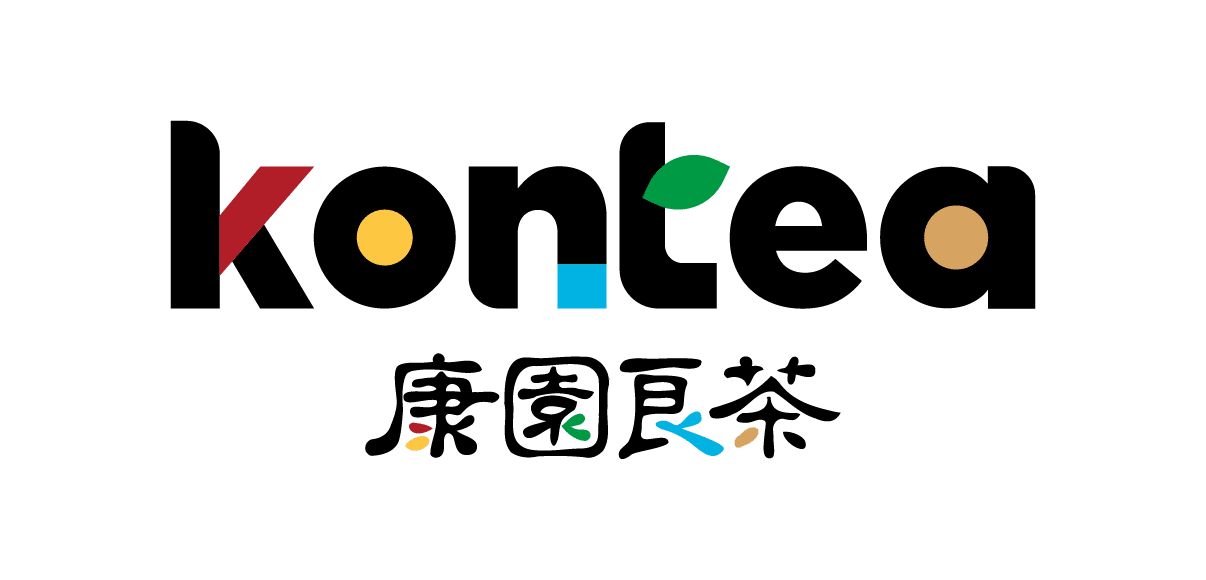
Symptoms of Gastric Pain
The symptoms of gastric pain and its understanding in modern medicine
Stomach pain, also known as epigastric pain, is primarily characterized by a painful sensation in the upper abdomen, often near the epigastrium. According to the understanding of modern Western medicine, the causes of this symptom include various diseases such as acute gastritis, chronic gastritis, gastric ulcers, duodenal ulcers, functional dyspepsia, and gastric mucosal prolapse. The common feature of these diseases is that upper abdominal pain is the main symptom.
Traditional Chinese Medicine (TCM) view on gastric pain
From a TCM perspective, stomach pain is classified into two categories: deficiency syndrome and excess syndrome. Excess syndrome stomach pain is mainly caused by external factors such as pathogens, diet, and emotions, while deficiency syndrome stomach pain is primarily due to weakness in the spleen and stomach. This differentiation between deficiency and excess guides distinct diagnostic and treatment approaches in traditional Chinese medicine.
Type of Gastric Pain
Gastric pain can be categorized into 7 patterns:
Cold Pathogen Invading the Stomach
Symptoms: Sudden pain in the stomach, aversion to cold, feels pain relieved by warmth, aggravated in cold and damp environments, preference for hot drinks. Pale tongue with a thin white coating and wiry pulse with tightness.
Liver Qi Invading the Stomach
Symptoms: Distending pain in the stomach, pain extending to the hypochondria, chest tightness, belching, sighing frequently. Easily triggered by emotional tension, irritability, and anger. Tongue with thin white coating, wiry pulse.
Stagnation of Food
Symptoms: Stomach distension and pain, resistance to pressing, belching with a foul taste or vomiting undigested food. Pain decreases after vomiting or bowel movements, uncomfortable feeling after defecation, and foul-smelling flatulence. Thick and greasy tongue coating, slippery pulse.
Obstruction by Damp-Heat
Symptoms: Stomach pain with a burning sensation, dry and bitter mouth, aversion to drinking water, feeling of heaviness in the head, poor appetite, nausea, and yellow urine. Red tongue with a yellow and greasy coating, slippery and rapid pulse.
Deficiency-Cold in the Spleen and Stomach
Symptoms: Dull and aching pain in the stomach, likes warmth and pressure. Pain occurs on an empty stomach and is relieved after eating, exacerbated after fatigue or exposure to cold. Spitting clear water, limbs tired, cold extremities, decreased appetite, loose stools. Pale tongue with white coating, deficient and weak pulse.
Deficiency of Stomach Yin
Symptoms: Burning pain in the stomach, seemingly hungry but averse to eating, emaciation and fatigue, dry mouth and tongue, thirst for water, dry stools. Red tongue with little saliva, thready and rapid pulse.
Stagnation of Blood
Symptoms: Stabbing pain in the stomach, fixed pain location, increased pain upon pressing, prolonged duration of stomach pain, worsening pain at night. Possible symptoms of vomiting blood or black stools. Dark purple tongue with ecchymosis, and choppy pulse.
Causes of Gastric Pain
The causes of gastric pain are generally diagnosed from both internal and external perspectives. External factors may include exposure to external pathogens such as cold, dampness, and heat, transmitted along the meridians. Internal factors may be caused by emotional disturbances, dietary imbalances, and deficiency in the spleen and stomach. During traditional Chinese medicine (TCM) diagnosis, Kang Won Herbalist practitioners analyze the data obtained from observation, listening, questioning, and pulse-taking to determine the nature, cold or heat, urgency, the relative importance of qi and blood, etc. Treatment approaches and medications vary flexibly based on the age, constitution, aetiology, and manifestations of each patient, showcasing the adaptability of TCM in treating the same disease with different methods—a characteristic of TCM. Clinically, there are different patterns such as disharmony between the liver and stomach, deficiency of spleen and stomach qi, and insufficient stomach yin, each with its own characteristics while also interpenetrating.
Traditional Chinese Medicine (TCM) Treatment on Gastric Pain
Method to Relief Gastric Pain
As patients, you can achieve relief when experiencing gastric pain through the following methods:
- Acupressure on Specific Points:
- Neiguan Point Location: About three horizontal fingers (approximately 2 inches) from the palm, between the middle two bones and tendons.
Function: Relieves chest congestion, gastric pain, aids digestion, and prevents nausea.
Method: Press gently while exhaling slowly, maintain for about 10 seconds, and release while exhaling. Repeat 10 times for better results. - Zhongwan Point Location: 4 inches above the centerline of the navel.
Function: Relieves stomach distension, pain, acid reflux, and hiccups.
Method: Press gently while exhaling slowly, maintain for about 10 seconds and release while exhaling. Repeat 10 times for better results. - Hegu Point Location: At the midpoint between the thumb and index finger, where the thumb bone's transverse lines meet the tiger's mouth of the other hand.
Function: A crucial point for treating various pain symptoms.
Method: Press gently while exhaling slowly, maintain for about 10 seconds and release while exhaling. Repeat 10 times for better results.
- Neiguan Point Location: About three horizontal fingers (approximately 2 inches) from the palm, between the middle two bones and tendons.
- Mind Over Matter Technique: When stomach pain occurs, it is essential to remain calm. Resist the pain, sit steadily in a chair, and slowly regulate your breath, inhaling until you can't inhale anymore, then exhaling slowly. Repeat this process for about 10 to 20 minutes, and the pain should alleviate or stop.
- Relax the Abdomen: Loosen your belt when experiencing stomach pain to ensure smooth circulation of stomach qi and make the abdomen more comfortable. Those who frequently experience stomach pain should typically wear comfortable and loose clothing to avoid pressure on the abdomen.
- Eat Something: Stomach pain is often due to hunger. Eating something soft, like bread or biscuits, can be effective. Avoid drinking milk or consuming hard substances. It's advisable to keep some soda crackers on hand for such occasions.
- Provide Warmth: Individuals with a cold stomach may experience pain due to the stimulation of cold foods. Drinking hot water or applying a hot water bag to the stomach can be effective.
Important Notice
Patients with Gastric Pain need to take note of the following habits to prevent the worsening of gastric pain symptoms:
- Avoid overeating, irregular eating habits, eating without a fixed schedule, eating hastily without focus (eating while working or studying).
- Avoid smoking, alcohol, strong tea or strong coffee, especially on an empty stomach.
- Avoid consuming extremely cold or hot foods, greasy and fatty foods, sticky foods (such as rice cakes, rice dumpling, glutinous rice), pickled foods (such as cured meats, sausages, canned luncheon meat), moldy foods, strong-flavored foods (such as spicy, excessively sour), fried foods, nuts, and hard-to-chew foods (such as octopus, chives), and stomach-harming medications.
- For individuals with stomach pain accompanied by excess stomach acid and susceptibility to bloating, avoid consuming sugar and foods that can cause bloating (such as potatoes, beans, peanuts, boiled eggs, dairy products, bread, etc.).
Kang Won Herbalist Physicians' Tips & Tricks for stomach nourishment
- Replace Some Staples Carbs with Chinese Yam: You can choose Chinese yam to replace a portion of the staple carbs you consume. Chinese yam is rich in polysaccharides, which protect the gastric mucosa. However, Chinese yam is not easily digestible and should not completely replace staple foods, with the replacement amount preferably not exceeding one-third of the staple food.
- Select Orange-Red Fruits and Vegetables: Choose fruits and vegetables that are orange-red in color, such as pumpkin, papaya, carrots, and tomatoes. These foods contain a significant amount of carotene, which transforms into vitamin A in the body, aiding in the repair of the digestive mucosa. These vegetables are rich in dietary fiber and are recommended to be cooked before consumption for easier digestion.
- Moderate Milk Consumption: Drinking a moderate amount of milk can temporarily neutralize stomach acid, relieving pain. However, individuals with peptic ulcers should avoid using milk for pain relief, as milk contains a large amount of protein, which may stimulate gastric acid and pepsin secretion, worsening ulcer symptoms.
- Develop Good Eating Habits: Ensure thorough chewing during meals, allowing teeth and the tongue to perform some of the stomach's functions, reducing the burden on the stomach. It is also advisable not to eat before bedtime to avoid excess nighttime gastric acid secretion that could trigger ulcers.
- Maintain Emotional Stability: Try to maintain stable emotions. According to traditional Chinese medicine, emotional fluctuations directly affect the digestive system. Stress, fear, and anger can lead to loss of appetite, while anxiety and depression can cause a lack of interest in food, directly impacting the digestive system.
- Incorporate Regular Exercise: Cultivate a habit of regular exercise, as appropriate physical activity contributes to stomach health and spleen invigoration. Exercise not only strengthens muscles and limbs but also enhances the functioning of the spleen and stomach, promoting the digestion and absorption of food. Suitable exercises include walking, jogging, calisthenics, dancing, Tai Chi, and Tai Chi sword.
Recommendation: Kontea Best Seller
Other than that, you may also consider choosing stomach-friendly food that can nourish your body when you experience gastric pain symptoms while taking your body condition and status in consideration:

Vitality Paste
Effects:Increases vitality and detoxes. Protects the liver, decreases stress, improves blood circulation, Improves allergic constitution, prevents fatigue, improves vitality and Strengthen Immune System.
Suitable for:Commonly recommended for children or the elderly, bad appetite, bloating, stomach pains, frequent fever, sinus, sweating, and fatigue. Enuresis in children, bad digestion, diarrhea, stool with undigested food scraps.

Digestive Wellness Paste
Effects:Regulate digestive function by warmly invigorating the digestive tract and reducing stomach acid, dispelling wind and alleviating abdominal pain, promoting wellbeing of liver and regulating flow of qi.
Suitable for:Suitable for: Anyone who frequently experience flatulence, bloating, gastric, acid reflux and indigestion.
Important Notice: Important notice: Avoid beans, potatoes, glutinous rice and starchy food, maintain a relaxed mindset.
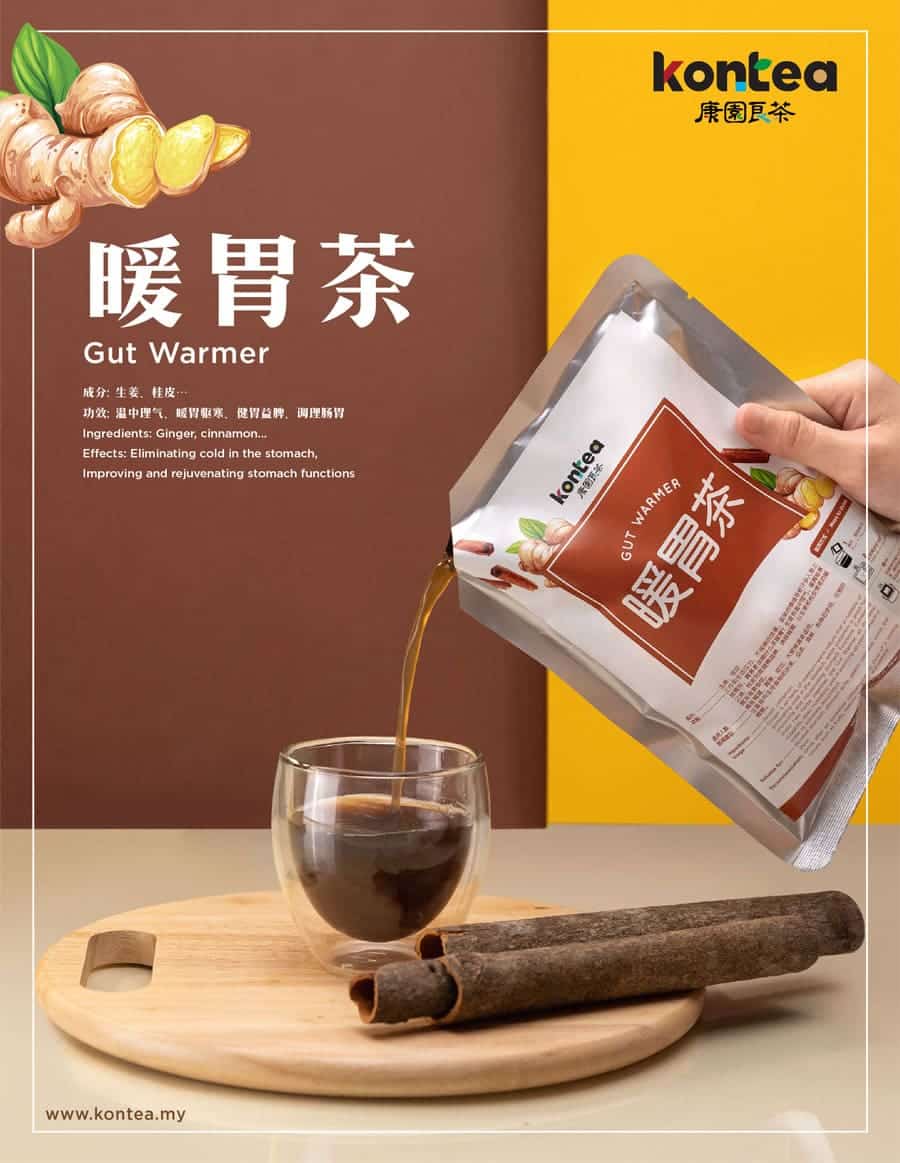
Gut Warmer Tea
Effects:Ginger is an herb of medium-warm nature that is capable of eliminating cold in the stomach, while cinnamon is good for improving and rejuvenating stomach functions. Combining these two herbs together, the Gut Warmer, as its name suggests, does incredibly well in warming up your stomach in order to eliminate discomfort.
Suitable for:Bloated stomach, stomach ache, gastric coldness, vomit, thin stool.
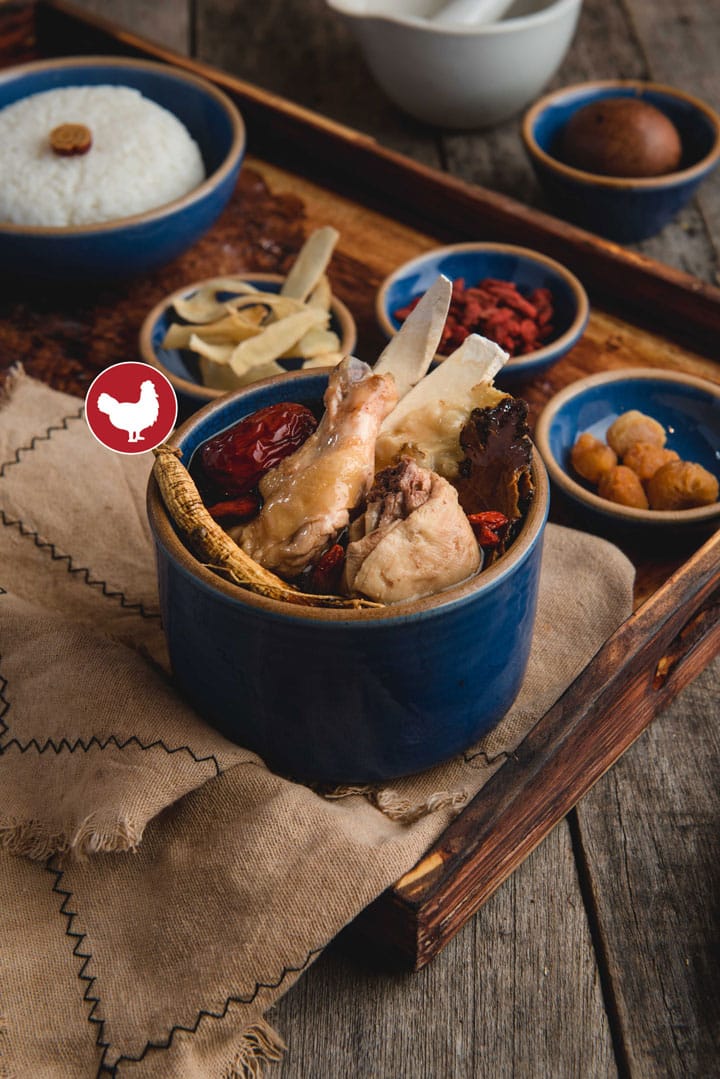
Ginseng Soup
Effects:Ginseng promotes strength in the Chi, lungs, and spleen, and can fight against fatigue, increases metabolism and helps with the immune system, as well as slows down ageing. Chinese yam is often called “natural ginseng”, as it also nourishes the lungs and spleen, and together with Polygonatum Odoratum, promotes healthy and optimal organ function.
Suitable for:Frail-bodied patients recovering from a big disease or treatment, bad appetite, and profusely sweating people.
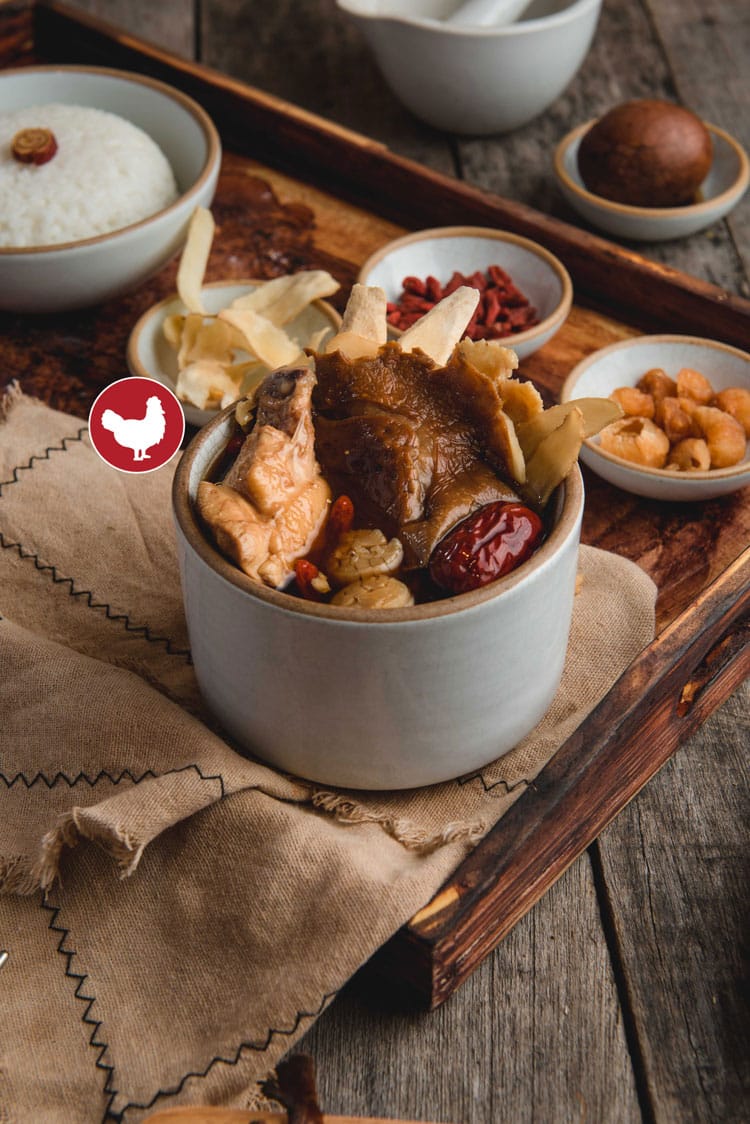
Mood Balancing Soup
Effects:Chestnut mushroom has unique medicinal properties that clears heat, balances the kidney, promotes clear vision, and promotes smooth urinary flow. Longan has been considered a great medicinal food for a long time, and red dates are sweet and warming and can treat diarrhoea and increase appetite.
Suitable for:Moodiness, lack of appetite, stomach discomfort. Also great for people who defecate easily.
In the case where gastric pain has already occurred, seeking prompt medical attention is crucial. Depending on the symptoms, both Traditional Chinese Medicine and modern medicine offer targeted treatment methods, including medication and dietary adjustments. By comprehensively utilizing various approaches, one can better address gastric pain issues and improve overall quality of life. Therefore, Kang Won Herbalist practitioners encourage everyone to cultivate good lifestyle habits and, at the same time, seek timely medical consultation when experiencing gastric pain symptoms for better treatment and prevention.
Welcome to inquire about herbal paste at Kontea OUG or Bangsar. Our Kontea physicians can tailor advice based on your specific symptoms, allowing us to better understand your situation and recommend suitable treatment plans or herbal paste formulas based on your body condition and symptoms.
Feel The Teaference
Kontea Products
Professional Service
TCM Services
Graduated from Nanjing University of Chinese Medicine in China, we are licensed Chinese medicine practitioners who provides professional Chinese medicine services. We approach each patient's case from their perspective, attentively listening and analyzing their physical condition.
